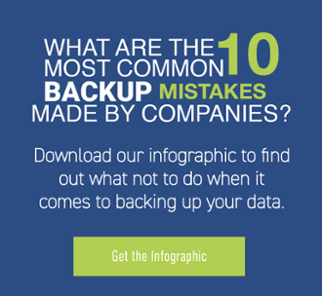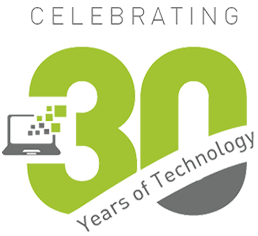
As the CEO of an SMB, you have to focus a lot of your attention on ROI. Of course, your ROI focus doesn’t have to be as strict as it was when your company was a startup, but you still have to watch your pennies, so you can maintain your business freedom. After all, you aren’t one of those mega-enterprises (yet). You don’t have billions in disposable cash to invest into risky R&D.
Since a proven ROI is so important, how do you know if you’re getting the best return on your IT investments?
No matter what your IT needs at your company, whether you have an ERP, general accounting software, a CRM system with business analytics, or numerous industry-specific programs and apps, the one way you can ensure you’re getting your money’s worth on IT is to keep your tech tools running.
And the way to do that is with a disaster recovery / business continuity solution.
Disaster Recovery – The Key to Modern Business Success
We’ve spoken about disaster recovery and business continuity before on this blog, but as a brief refresher, disaster recovery is a duplicate backup method that relies on image-based “snapshots” to restore all your business systems in as little as 5 minutes after a network disaster such as ransomware, fire, or flooding.
All CEOs understand why being able to restore systems is critical for long-term success, which is why they make sure they’re performing regular data backups. However, many CEOs don’t yet understand why being able to restore systems in mere minutes using business continuity / disaster recovery services is critical for modern business success.
Here are just a few reasons why a fast restore is in your best interests and promises a better ROI:
- Your Business Runs on Data
Whether we’re talking about accounting data, intellectual property, eCommerce listings, customer information, or simply the cell-by-cell entries in the spreadsheet you’re currently taking a break from, you and all your employees must access data constantly to accomplish job functions and stay competitive.
Since all your business tasks require data, that means your business relies on data to move forward. Without ready access to data at the office, your employees will be stuck sitting around doing nothing… on your dime.
Even in a small company with 20 salaried employees getting paid an average of $40,000 per year, a single hour of their time spent doing nothing costs you approximately $400 in labor costs alone. If it takes you a full, 8-hour day to restore data access for your employees, that number climbs to $3,200 just in lost labor costs. As a comparison, if your data was restored within 5 minutes, you’d only have spent $33 in lost productivity.
Consider also that these numbers don’t take into account the hours of time that you or your employees have to spend backing up and tracking down data with your current backup methods. How much is that costing you? Since disaster recovery is automated, it helps you save on those labor costs too.
- Humans Cause Disasters Too
When most CEOs think of “disasters,” they imagine a merciless hacker or a destructive natural event like a hurricane. This makes sense. Many of us still remember the business havoc that Hurricane Sandy caused, and new hurricanes hit the U.S. coast each year. As for hackers, well, it doesn’t take much work to recall a recent data breach or ransomware attack – all you need to do is think back to this morning’s news stories.
However, disaster isn’t always caused by hackers and hurricanes. Disaster can also be caused by human errors, and we’re all guilty of making mistakes.
Think back: When is the last time you deleted a file and then realized, a split-second later, that you’d deleted the wrong item? How much time did you then spend trying to get the file back, searching for an older version of it, and cursing the technology gods for your rotten luck?
That experience (cursing and all!) has happened to every person you know, and it will happen to all of us many, many more times throughout our lives. When it happens to you or your employees, a disaster recovery / business continuity solution can help you restore that missing file quickly, whereas your current backup solution cannot.
That’s a time saver and an ROI builder.
Downtime Is Expensive – Disaster Recovery Is Comparatively Not
As we said earlier, the best way to maximize your profitability and get the most from your business tech solutions is to ensure that they work when you need them to. If your systems and networks go down, neither your apps nor your employees will be able to work. That downtime can cost a lot in terms of customer satisfaction, business reputation, and overall revenues.
If you’re looking to ensure that your SMB gets the best return on investment, take a few minutes to compare the ROI of disaster recovery vs. your current backup solution – and prepare to be surprised when you discover the true ROI of disaster recovery.
Contact BitxBit to request your free consultation and downtime calculator, so you can figure your ROI accurately and get the most from your tech tools.

.png)



